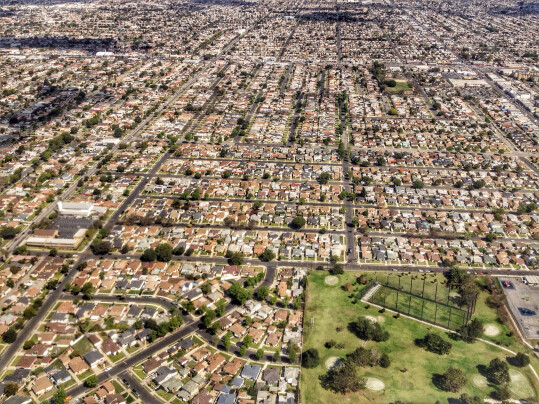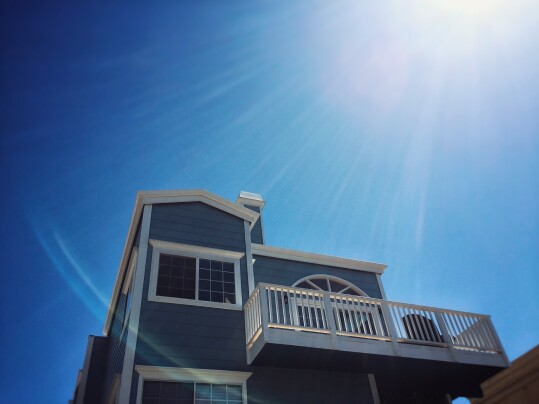Mortgage credit availability isn’t fixed. Depending on current lending standards and loan programs, there will be times when it’s easier to get a mortgage and times when it’s more difficult. The Mortgage Bankers Association’s Mortgage Credit Availability Index tracks whether credit is loosening or tightening each month on a scale where any increase indicates access to credit has grown. In March, the index rose 1.1 percent. It was the third consecutive monthly improvement. Joel Kan, MBA’s vice president and deputy chief economist, says the improvement was due to gains in conventional credit. “Credit availability increased in March, driven by growth in conventional credit,” Kan said. “There were increased offerings of cash-out refinance loan programs across fixed rate and ARM loans, as well as for all occupancy types.” That’s good news for potential borrowers. But while credit availability has been improving in recent months, it still remains lower than last year. (source)
Archive for Housing Market
Mortgage Credit Availability Rises Again
Average Mortgage Rates Up From Previous Week
According to the Mortgage Bankers Association’s Weekly Applications Survey, average mortgage rates increased last week from the week before. Rates moved higher for 30-year fixed-rate loans with both conforming and jumbo balances, loans backed by the Federal Housing Administration, 15-year fixed-rate loans, and 5/1 ARMs. Joel Kan, MBA’s vice president and chief economist, says the economy is resilient and it’s keeping rates higher. “Mortgage rates moved higher last week as several Federal Reserve officials reiterated a patient posture on rate cuts,” Kan said. “Inflation remains stubbornly above the Fed’s target, and the broader economy continues to show resiliency. Unexpectedly strong employment data released last week further added to the upward pressure on rates.” Despite higher rates, overall mortgage loan demand was virtually unchanged from the previous week due to a spike in refinance activity. The MBA’s weekly survey has been conducted since 1990 and covers 75 percent of all retail residential mortgage applications. (source)
Number Of Million Dollar Cities Has Increased
A “million dollar” city is one where the typical home is worth $1 million or more. These days, there are more of them than you might think. In fact, according to one new analysis, there are 550, up from 491 last year at the same time. The growing number of million dollar cities is largely due to the low inventory of homes for sale. Too few available homes has been driving prices higher for years and has continued to even after mortgage rates rose from historic lows. But while price increases have helped create more million dollar cities, they mostly remain in familiar locations. For example, 210 of them are located in California alone, with New York and New Jersey accounting for another 115. States like Georgia, Kansas, Michigan, and Maine, on the other hand, only have one each. (source)
Housing Market Optimism Begins To Grow
Fannie Mae’s monthly Home Purchase Sentiment Index is based on a survey of Americans which asks for their opinion on buying/selling a home, mortgage rates, prices, their job and financial security. The index hopes to capture Americans’ general feeling about the housing market. In March, it found respondents slightly more optimistic than the month before. In fact, the share who say it’s a good time to buy was up 4 percent and the share who say it’s a good time to sell rose 2 percent. Doug Duncan, Fannie Mae’s senior vice president and chief economist, says it’s a sign consumers have adjusted their expectations. “The HPSI remained relatively flat in March, but we’re seeing signs that consumers may be adjusting their expectations for the housing market to better accommodate the higher mortgage rate and home price environment,” Duncan said. But while Americans are feeling better about buying or selling a home, they also believe prices and mortgage rates will continue to increase over the next 12 months – an indication that affordability concerns persist. (source)
The Average Property Tax Increased Last Year
When you buy a home, you’re buying into a community. That means paying property tax to help better that community. Property taxes help cover the bill for things like schools, police and fire departments, road repairs, and libraries. Necessary stuff, for sure. But though they pay for things we need, taxes are never popular. And now, according to ATTOM Data Solutions, they’ve risen. In fact, according to ATTOM’s analysis of taxes on 89.4 million single-family homes across the country, the average tax increased 4.1 percent last year, after going up 3 percent the previous year. Rob Barber, ATTOM’s CEO, says the increase was likely connected to inflation. “The tax increases were likely connected, at least in part, to inflationary pressures on the cost of operating local governments and schools, along with rising public employee wages and other major expenses,” Barber said. But while property tax is up nationally, it varies from location to location. For example, Illinois has an effective rate of 1.88 percent, the highest in the nation, while Hawaii’s effective property tax rate is just 0.31 percent. (source)
Will Buyers See More Price Cuts This Spring?
It’s been a while since the market favored home buyers. With inventory hovering near historic lows, home sellers have reaped the benefits of bidding wars, buyer competition, and spiking prices for most of the past several years. Now things may be changing. The number of homes for sale remains low but recent improvements have conditions looking better for buyers than they’ve been in years. In fact, according to a recent analysis from the National Association of Realtors’ consumer website, price cuts on homes for sale are higher than they’ve been since 2019, with reductions rising in 34 of the 50 largest metro areas. Danielle Hale, the website’s chief economist, says things should only get better. “Sellers are starting to warm up to the current environment, wading into the market in increasing numbers despite market mortgage rates that are likely above their existing rate, if they have a mortgage,” Hale said. “As seller optimism swells, we may see even further inventory gains later in the season that will likely create a more balanced environment for hopeful home buyers.” (source)
Average Mortgage Rates Down Again
According to the Mortgage Bankers Association’s Weekly Applications Survey, average mortgage rates fell again last week. Rates were down from the week before for 30-year fixed-rate loans with both conforming and jumbo balances, loans backed by the Federal Housing Administration, and 15-year fixed-rate loans. But despite the declines, demand for mortgage applications was relatively flat. In fact, the MBA’s Market Composite Index – which measures both refinance and purchase loan activity – was down 0.6 percent week-over-week. Joel Kan, MBA’s vice president and deputy chief economist, says rates remain elevated. “Mortgage rates moved lower last week, but that did little to ignite overall mortgage application activity,” Kan said. “Elevated mortgage rates continued to weigh down on home buying. Purchase applications were unchanged overall, although FHA purchases did pick up slightly over the week.” The MBA’s weekly survey has been conducted since 1990 and covers 75 percent of all retail residential mortgage applications. (source)







